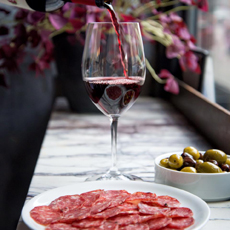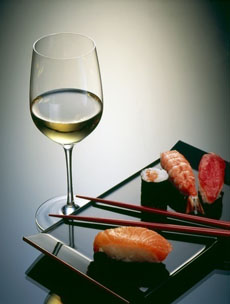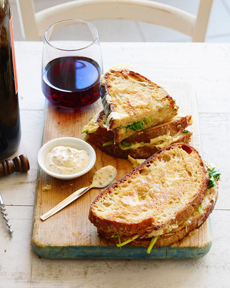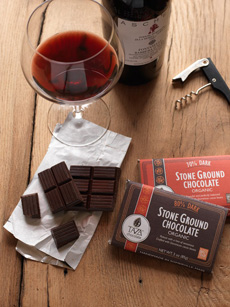|
Today’s tip is to step outside your comfort zone and try different wines than the standards you serve with particular foods.
If you drink wine often, you no doubt have a favorite to drink with your favorite foods, from snacks to mains to desserts.
What happens if you step out of your comfort zone? You may discover grape varietals you haven’t had before, and pairings that you like even better.
While it’s common wisdom that the wines of a particular region pair best with the foods of that region, don’t let that impede your decisions. The most important pairing is with the food and its preparation (light or heavy, herbal or spicy, etc.).
Entire books have been written on the topic, but here’s a brief overview from DiscoverCaliforniaWines.com. You can search online for recommendations, or ask your wine store clerk: an invaluable source of information and recommendations.
If you’re not familiar with the grape varietal, look it up. Wines in France, Italy and elsewhere are often named for their region of production, not for the varietal labeling of Australia, New Zealand, South Africa and the U.S.
In France, you’ll find bottles of Red Burgundy and Sauternes—the regions rather than the grapes Pinot Noir and Semillon.
In Italy, you’ll find a mixed system: Brunello di Montalcino instead of Sangiovese (which is also the main grape in Chianti), Barolo and Barbaresco instead of Nebbiolo; but with Pinot Grigio, it’s the name of the grape.
It gets much more complicated than this, involving history, law and other factors. But let’s get on to the wines.
WINE & FOOD PAIRINGS FROM A TO Z
Some are red wines (R), some are white wines (W), and some are both (R&W).
Albariño (W): Pair with light summer foods or foods that want fresh acidity because they’re fatty/oily, mildly spicy, rich or salty; plus tart recipes with capers, tomatoes and vinaigrettes.
Barbera (R): Pair with smoked salmon, grilled mozzarella and prosciutto, and flatbread with fresh tomato, basil and roasted garlic.
Cabernet Franc (R): Pair with a classic beef stew, aged Gouda, and rosemary-rubbed pork tenderloin.
Cabernet Sauvignon (R): Pair with grass-fed beef, whether grilled, roasted, braised or stir-fried.
Chardonnay (W): Pair with white fish, shellfish and free-range chicken – especially with creamy, buttery sauces.
Chenin Blanc (W): Pair with seared scallops, chicken in coconut curry, or sliced ripe pears with fresh or slightly aged sheep’s milk cheeses.
Dessert Wines (R & W): Pair with nuts—almonds and hazelnuts—as well as chocolate tortes, vanilla custard, peach cobbler and ricotta cheesecake. In general, aim to pair sweet dessert wines with sweet desserts, and light dessert wines with light desserts. foie gras, lobster, and seafood in a butter or white cream sauce.
Gewürztraminer (W): Pair with smoked white fish, spicy stir-fried dishes, or slightly sweet desserts. See our full article on pairing desserts with wine.
Grenache (R): Pair with any grilled shellfish as well as salami, sliced ham and other charcuterie.
Grenache Blanc (W): Pair with crab, squid, or clams with garlic butter as well as grilled snapper with lemon zest.
Malbec (R): Pair with classic rack of lamb, beef fajitas, and roasted root vegetables.
|
|



[1] An Italian red is a traditional pairing with salami, olives and other nibbles. But why not try a Cabernet Franc, Malbec or Zinfandel (photo courtesy Rebelle | NYC)? [2] Don’t want beer or saké with your sushi? Try a light white wine, such as Albariño or Chenin Blanc. Our personal favorites are Gewürtztraminer and Riesling—more assertive, because we just can’t get enough of them (photo by Lognetic | Dreamtime). [3] With a well-seasoned grilled cheese sandwich, try a medium-bodied red: Barbera, Malbec, Merlot, Rhone blend, Sangiovese, or the lesser-known Montepulciano.
|







